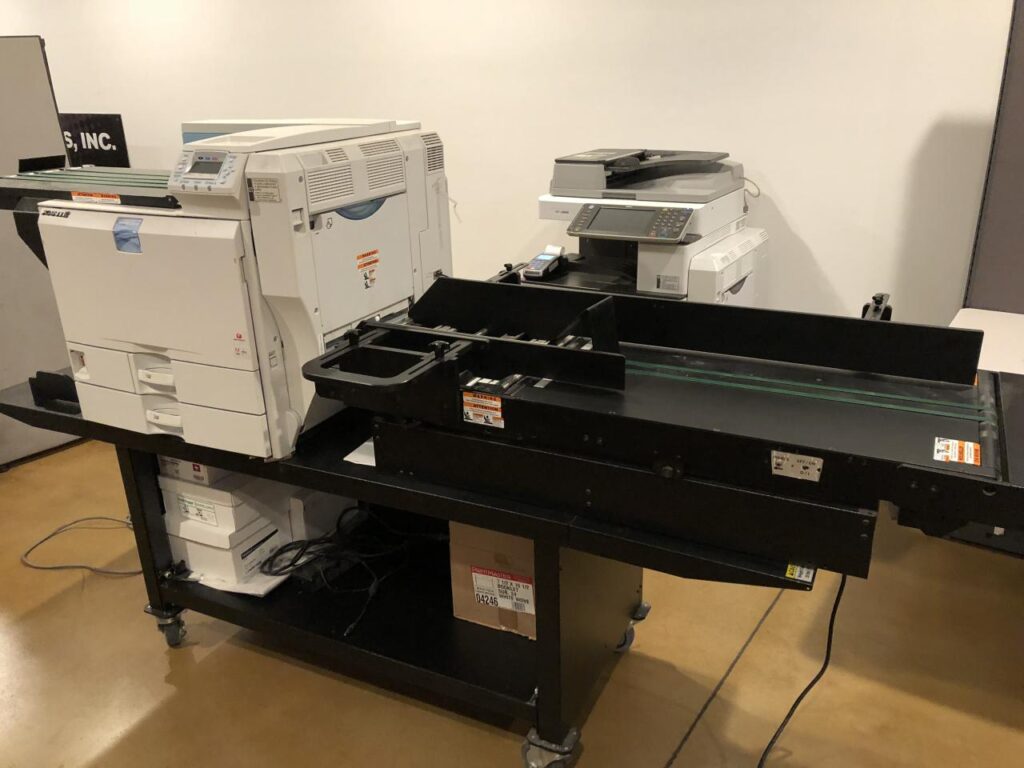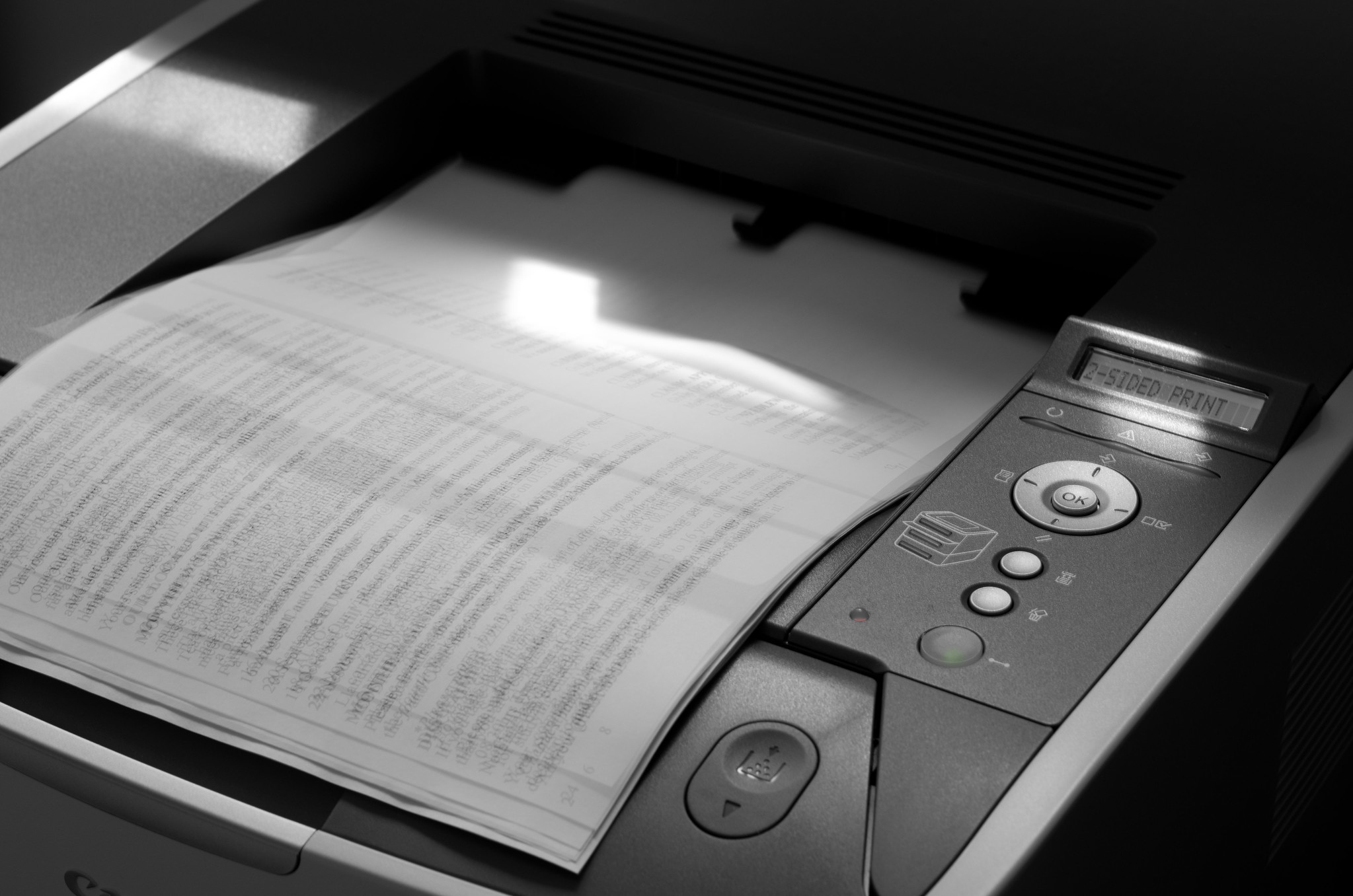
Printing 101: What is Laser Printing?
In an age where precision, speed, and high-quality output are paramount, laser printing has emerged as a cornerstone in digital printing. From offices to homes and commercial printing establishments, laser printers have become ubiquitous, revolutionizing the way we reproduce text and graphics on paper. This article aims to demystify the workings of laser printing, exploring the technology behind it, its applications, and the distinct advantages that have propelled it to the forefront of the printing landscape. Join us as we unravel the fascinating world of laser printing and understand why it continues to be a stalwart in meeting the diverse printing needs of today’s dynamic and fast-paced environments.
What is Digital Printing?
Digital printing is a modern and versatile printing method that directly transfers digital files onto various printing substrates without the need for traditional printing plates or extensive setup processes. Unlike traditional methods like offset printing, digital printing eliminates the need for intermediary steps, allowing for quick and cost-effective production of small to medium print runs. In digital printing, the image or text to be printed is sent directly from a computer to the printing device, whether it’s a laser printer or an inkjet printer, resulting in a more streamlined and efficient printing process.
This printing technique is highly adaptable, accommodating a diverse range of materials, including paper, cardstock, fabric, and even certain plastics. Digital printing excels in producing variable data printing, where each printed piece can be customized with unique information, making it ideal for personalized marketing materials such as direct mail campaigns and promotional items. Additionally, the ability to achieve high-quality prints with relatively quick turnaround times has made digital printing a preferred choice for businesses and individuals seeking flexibility, customization, and efficiency in their printing projects.
What is Laser Printing?
Laser printing is a high-speed and efficient method of reproducing text and graphics on various media, commonly paper. Employing laser technology, this printing process is characterized by its ability to deliver sharp, clear, and consistent print output. Laser printers are widely utilized in offices, businesses, and homes due to their rapid printing capabilities, producing professional-quality documents and images with precision. The popularity of laser printing stems from its reliability, speed, and ability to handle diverse printing tasks, making it a foundational technology in the realm of modern printing.
How Does Laser Printing Work?
Laser printing is a digital printing process that utilizes laser technology to create high-quality text and images on paper or other printing substrates. The fundamental steps in the laser printing process are as follows:
- Digital Data Preparation:
- The printing process begins with a digital file containing the text, graphics, or images to be printed. This digital file can be created using various software applications.
- Raster Image Processing (RIP):
- The digital file is processed by a Raster Image Processor (RIP), which translates the digital data into a rasterized image, a series of dots or pixels that represent the content to be printed.
- Laser Scanning:
- A laser beam scans across a rotating photosensitive drum or belt within the printer. The laser creates an electrostatic charge on the drum, forming a latent image that corresponds to the content of the digital file.
- Toner Application:
- Toner, a fine powder composed of pigments and polymer, is electrostatically attracted to the charged areas on the drum, adhering to the latent image and creating a visible image made of toner particles.
- Transfer to Paper:
- The toner-coated drum comes into contact with a sheet of paper or another printing substrate. The toner is transferred from the drum to the paper, creating a mirror image of the latent image.
- Fusing:
- The printed paper passes through a fusing unit, where heat and pressure are applied to melt and fuse the toner particles permanently onto the paper, creating a durable and smudge-resistant print.
- Cleaning and Charging:
- Any residual toner on the drum is removed, and the drum is prepared for the next printing cycle by applying a fresh charge.
This precise and efficient laser printing process is commonly used in offices, homes, and commercial printing settings due to its ability to produce high-quality prints with sharp text, detailed graphics, and quick turnaround times.
Most Common Products Produce by Laser Printing
Laser printing is a versatile technology that is widely utilized to produce an array of products for both personal and commercial use. Some of the most common products created through laser printing include:
- Documents and Reports: Laser printers are commonly employed to produce various business documents, reports, and presentations.
- Marketing Collateral: Businesses use laser printing for marketing materials such as brochures, flyers, and promotional pamphlets.
- Business Cards: Laser printing is a popular method for creating business cards, providing a crisp and professional look.
- Labels and Stickers: Laser printers are employed to produce labels and stickers for various applications, including product labelling, address labels, and promotional stickers.
- Photographs: While specialized photo printers are common for high-quality photo prints, laser printing is still used for quick and decent-quality photo prints on regular paper.
- Educational Materials: Laser printing is extensively used in educational settings to produce handouts, worksheets, and study materials.
- Personal Projects and Art Prints: Individuals use laser printing for various personal projects, including art prints, greeting cards, and DIY crafts.
- Transparencies for Overhead Projectors: This is common in educational and business environments for presentations and training sessions.
- Legal and Official Documents: Laser printing is often employed for printing legal and official documents, including contracts, agreements, and certificates.
- Envelopes and Stationery: Laser printing is used for customizing envelopes with company logos and addresses. It’s also applied to print personalized stationery and letterheads.
The adaptability and precision of laser printing technology make it a preferred choice for producing a diverse range of products across different sectors, balancing quality and efficiency in print production.
Best Laser Printers in 2023
Here are some of the best laser printers:
- En/Press Digital Multi-Media Pres – offers users an affordable way to go digital and meet the demand for fast, full-color printing.
- Okidata C710N Color Laser Printer – a digital colour printer that combines fast print speeds with HD Color output, flexible paper handling, and exceptional cost efficiency and security controls. It’s perfect for your mid-size workgroup.
- Xanté Impressia Digital Multi-Media Press – Lowest cost per print in the industry
In conclusion, laser printing stands as a cornerstone in the realm of modern printing technology, offering a seamless and efficient process for producing a wide array of high-quality products. As explored in this article, the intricacies of laser printing involve a digital-to-physical transformation, from the meticulous preparation of digital files to the precise scanning of a laser beam and the fusion of toner onto paper. Its versatility is evident in the diverse range of products it can generate, including crisp business documents, vibrant marketing collateral, personalized business cards, and educational materials. From the professional setting to personal creative endeavours, laser printing continues to be a reliable and indispensable tool, delivering a fusion of accuracy, speed, and adaptability that meets the dynamic printing needs of both businesses and individuals alike.
Ready to elevate your printing service capabilities? Wondering how laser printing technology can enhance the precision and impact of your visual communication materials? Explore the possibilities with our range of cutting-edge laser printers today and take your business’s printing quality to new heights. Contact us today to discover the perfect laser printing solution for your business and elevate your printing game to new heights.









